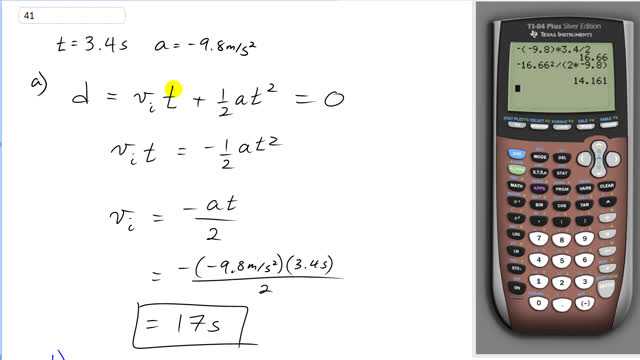
A ball player catches a ball 3.4 s after throwing it vertically upward. With what speed did he throw it, and what height did it reach?

In order to watch this solution you need to have a subscription.
This is Giancoli Answers with Mr. Dychko. When the person throws the ball straight up, and it comes back to their hand, it means the displacement of the ball will be zero and that's given by the initial launch speed upwards times time plus one-half acceleration times time squared. We can move this term to the right-hand side making it negative and then divide both sides by t that gets rid of one of the t's there and we solve for initial speed equals negative at squared. Acceleration is negative downward say and so we have negative 9.8 meters per second squared times the 3.4 seconds it spends in the air and all divided by 2 gives 17 meters per second is the initial launch velocity. To find the maximum height that it reaches, we know that at the very top of its parabola, its trajectory, it's gonna have a final speed of zero when the ball's thrown upwards and it gets to this point here and it's just on its way back down at that point, its final speed is zero and so we'll solve this equation for d and we'll subtract v i squared from both sides and divide by 2a and so we have negative v i squared over 2a and that gives us this negative 16.66 meters per second, which we found in part (a), we'll square that divide by 2 times negative 9.8 meters per second squared giving a maximum height of 14 meters.
Why cant the formula v1=vo+At be used for this problem assuming v1=0?
You can, but the answer needs to be divided by two